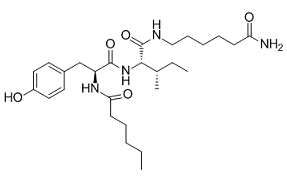Extending the classical promote academic research health care benefits gprd adsorption simulation to 100 ns resulted only in a slight extension of the visited conformational space. Other results employing long classical simulations suggest that even after long simulation times, which seemingly equilibrated the system, sudden structural changes may occur. Comparing our results obtained by classical and accelerated molecular dynamics simulations we conclude that sufficient sampling of the conformational space is key to understanding protein adsorption. Since adsorption phenomena take place in  time scales extending from ms to hours, the use of classical MD simulations of a few nanoseconds up to 100 ns in an explicit water surrounding is not adequate for studying and describing the entire adsorption process. Our approach uses an explicit water environment with standard temperature and pressure control. By modifying the potential energy landscape through accelerated MD, conformational changes can occur in the time range accessible to simulation. Especially during adsorption the protein can get stuck in metastable states that hinder further spreading on hydrophobic surfaces. Beside many available advanced sampling methods, recently reviewed by Zuckerman, we would like to point out an approach by Wang et al. which uses biased replica-exchange molecular dynamics to study adsorption processes. Comparing biased-REMD to accelerated MD we emphasize that aMD, besides being easy to handle, is computationally more efficient since no different replicas have to be simulated; the latter feature limits biased-REMD to smaller systems. On the other hand, REMD will give exact dynamics with a known reweighting factor. The easiness of use and computational efficiency make aMD an ideal candidate for studying adsorption processes in large systems. Other interesting sampling techniques such as conformational flooding might be used as well to address adsorption studies but appear not so straightforward as aMD. Finally, coarse-grained models that might provide an interesting alternative for calculating large systems over long time scales always bear the risk of producing artifacts. Our results suggest that the monomeric form of BMP-2 does indeed unfold on a hydrophobic graphite surface as suggested by previous results. Despite the different protein structure this is in clear contrast to recent results by Utesch et al.. It appears logical that a classical 10 ns MD simulation, such as that performed in, cannot provide insight into structural rearrangements during adsorption since the conformational space is sampled only insufficiently. We note that even in cMD simulations extending over several hundred ns, it has been found that the final configuration is governed by sudden conformation jumps which may occur late in the simulation. Even though the dynamics of the adsorption process have been altered, the final adsorption state is most relevant in adsorption studies, since it can be compared with experimental results.
time scales extending from ms to hours, the use of classical MD simulations of a few nanoseconds up to 100 ns in an explicit water surrounding is not adequate for studying and describing the entire adsorption process. Our approach uses an explicit water environment with standard temperature and pressure control. By modifying the potential energy landscape through accelerated MD, conformational changes can occur in the time range accessible to simulation. Especially during adsorption the protein can get stuck in metastable states that hinder further spreading on hydrophobic surfaces. Beside many available advanced sampling methods, recently reviewed by Zuckerman, we would like to point out an approach by Wang et al. which uses biased replica-exchange molecular dynamics to study adsorption processes. Comparing biased-REMD to accelerated MD we emphasize that aMD, besides being easy to handle, is computationally more efficient since no different replicas have to be simulated; the latter feature limits biased-REMD to smaller systems. On the other hand, REMD will give exact dynamics with a known reweighting factor. The easiness of use and computational efficiency make aMD an ideal candidate for studying adsorption processes in large systems. Other interesting sampling techniques such as conformational flooding might be used as well to address adsorption studies but appear not so straightforward as aMD. Finally, coarse-grained models that might provide an interesting alternative for calculating large systems over long time scales always bear the risk of producing artifacts. Our results suggest that the monomeric form of BMP-2 does indeed unfold on a hydrophobic graphite surface as suggested by previous results. Despite the different protein structure this is in clear contrast to recent results by Utesch et al.. It appears logical that a classical 10 ns MD simulation, such as that performed in, cannot provide insight into structural rearrangements during adsorption since the conformational space is sampled only insufficiently. We note that even in cMD simulations extending over several hundred ns, it has been found that the final configuration is governed by sudden conformation jumps which may occur late in the simulation. Even though the dynamics of the adsorption process have been altered, the final adsorption state is most relevant in adsorption studies, since it can be compared with experimental results.